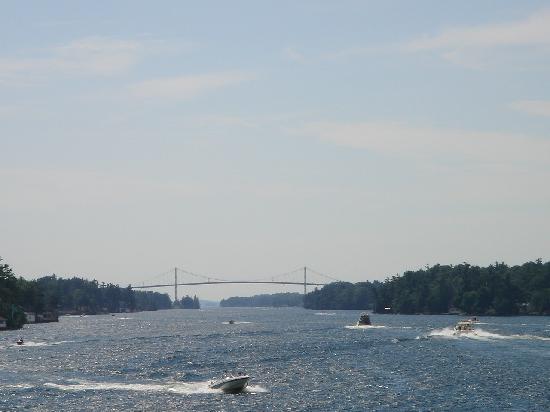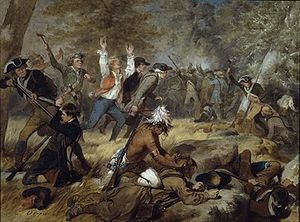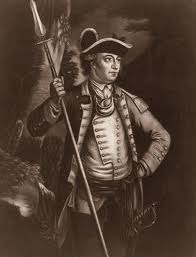Related Topics
Northern Overland Escape Path of the Philadelphia Tories 1 of 1 (16)
 Grievances provoking the American Revolutionary War left many Philadelphians unprovoked. Loyalists often fled to Canada, especially Kingston, Ontario. Decades later the flow of dissidents reversed, Canadian anti-royalists taking refuge south of the border.
Grievances provoking the American Revolutionary War left many Philadelphians unprovoked. Loyalists often fled to Canada, especially Kingston, Ontario. Decades later the flow of dissidents reversed, Canadian anti-royalists taking refuge south of the border.
Central Pennsylvania
"Alabama in-between," snickered James Carville, "Philadelphia, Pittsburgh, and Alabama in-between."
The Pennamite Wars
The Connecticut farmers believed the King's last word overturned all earlier ones, else why be a king? William Penn's revolutionary idea was that of private property -- the first sale created a new owner, whose new word erased any earlier ones. When you acquire a new continent from aborigines, that's a congenial viewpoint.
Wilkes-Barre, Site of the Wyoming Massacre

|
| Wyoming Massacre |
For eons of time, the site of Wilkes-Barre, PA was once a sort of finger-lake between two mountain ridges. As dammed-up rivers tend to do, this one gradually filled up with sludge until the water spilled over at Nanticoke, a few miles to the south. After the lake drained out leaving the original river in place, there was also left a flat and fertile valley on either side of it. Furthermore, the towering mountain ranges on either side protected the valley from the weather, so the Wyoming Valley became a verdant paradise in the middle of the mountains. Somehow, the Congregationalist settlers of Connecticut found out about it, dug up some old deeds from King Charles to the effect it belonged to Connecticut, and eventually set forth to resettle in this mountain valley. Pennsylvania took offense at this, and the result was three little wars which few people have heard of, called the Pennamite Wars. The local Indians were most offended of all and did the most massacring in a very thorough way. During the Third Pennamite War, George Washington was at Valley Forge with more urgent matters on his mind, and dispatched General Sullivan to "take care" of the Indian problem; Sullivan did so in a very thorough way, essentially destroying the Iroquois nation. The other eleven colonies were distraught to see Pennsylvania and Connecticut putting on a side-show, and part of the judicial settlement was to give Connecticut the "Western Reserve" in Ohio as compensation for restoring the peace. The American Constitution of 1787 essentially made state possession of land a moot point, and the Western Reserve is just a quaint term you hear in Cleveland. Wyoming is a term that most people associate with a Western State, although it is named for this valley, and Dallas is another term that has been largely transplanted from a small town near Wilkes-Barre to a big town in Texas. So, if you want to get the confusion of terms straight, about Wyoming, Dallas, Western Reserve, and Westmoreland, you will take a little time to learn about Wilkes-Barre. Westmoreland is the name of gentleman's club in Wilkes-Barre, but it is also the name of a county near Pittsburgh where Connecticut folks thought it would be useful to flee.
That's a lot of history for a little town, but there's more. Somehow, the joys and pleasures of living in the Wyoming Valley were carried back to people like Rousseau, who were looking for examples of the "noble savage", noble because he had not learned all of the evil things that French aristocrats invented, and therefore warranted effusive praise during the so-called Romantic Period, when France was being purified by the guillotine. The main drum-beater for this mania was a poet named Thomas Campbell, who composed a long poem in Spencerian rhyme called "Gertrude of Pennsylvania". Even those who find merit in Spencer will nowadays find it difficult to accept the notion of flamingos on Pennsylvania streams, or lying on the ocean beaches of Pennsylvania, reading Shakespeare. Even those who have less taste for Herbert Spenser will still find a reason to distrust the judgment of those who praise the beheading of, say, Lavoisier. The noble savages in this particular case were Iroquois, who exterminated 600 settlers by essentially torturing them to death.

|
| General John Sullivan |
There's a memorial in nearby Wyoming commemorating this massacre, which indeed is probably better left forgotten. There are plaques with the names of the fallen, and the names of the survivors. The idea of the Wyoming Valley as a paradise on earth was destroyed by another event. The ancient lake which once filled the Wyoming Valley was deeper and more ancient than anyone guessed. Underneath the rich topsoil was a vein of anthracite, and Wilkes-Barre became a boom town with strip mining, a fate no paradise can long withstand. There is nearby said to be a coal mine which caught fire underground and has been burning uncontrolled for several decades. Talk about pollution disasters; this one is a monster.
Reliable records of how the Connecticut Yankees got to the Wyoming Valley are hard to find. Offhand, it is puzzling to wonder how they got past New York or crossed the Hudson River. The best way to get between the two places today is probably pretty close to the route the colonists took, however, because travel in those days was much more constrained by geography. We know they started from Litchfield, CN, and in fact, for a while, Wilkes-Barre was part of the County of Litchfield. From Litchfield, they likely crossed the Hudson near Newburgh, went to the mountain gap at Port Jervis, and either came into the Wyoming Valley over the ridges or went a little north to the Susquehanna and came down from there. On a map at least, that's a relatively straight shot.
Originally published: Wednesday, August 11, 2010; most-recently modified: Wednesday, June 05, 2019
| Posted by: Penny | Jun 24, 2013 5:02 AM |
| Posted by: Jaylan | Sep 6, 2011 10:17 AM |